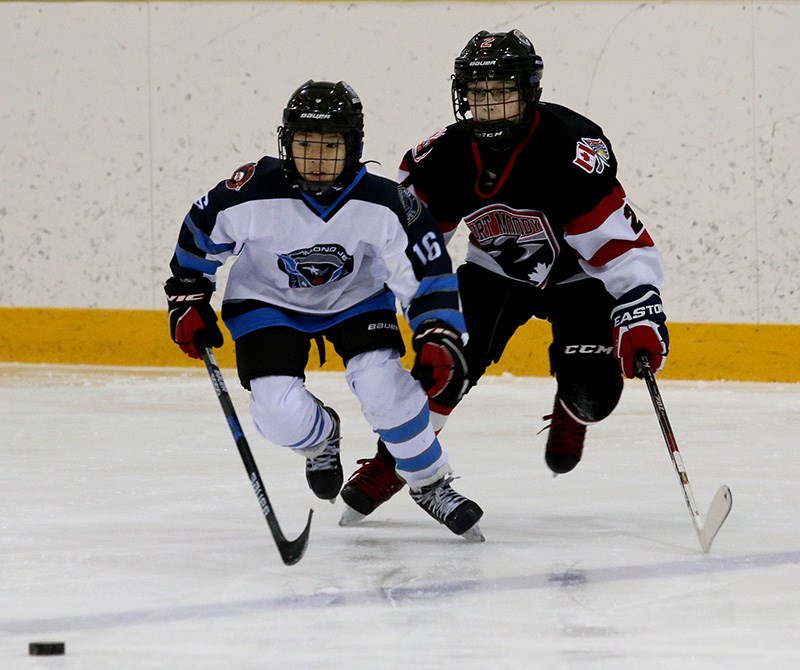For minor hockey associations in the Tri-Cities, it’s been an off-season unlike any other.
And as thoughts begin turning from beach time to ice time, they’re still not certain how the coming season will look.
But each says it’s determined to give kids the best hockey experience they can given restrictions and precautions implemented to keep players, coaches and families safe in the middle of the COVID-19 pandemic.
“It will be interesting to see what happens,” said Stephanie Naqvi, of the Port Moody Amateur Hockey Association, adding administrators have been meeting weekly to map out their plan to create a fun, competitive environment even if there are no games.
Ramin Ahmed, the president of Port Coquitlam Minor Hockey, said his group has been planning its return to play since June, and in July began working with the city to reach an understanding on issues like arena access, the number of people that will be allowed in the rink, time frames for cleaning and the establishment of staging areas where kids will be able to put on and take off their skates.
Coquitlam Minor Hockey has published extensive documentation on its website outlining safety guidelines like no sharing of food, no spitting, and no blowing noses except into a tissue that must then be properly disposed of.
According to timelines set out by the Pacific Coast Amateur Hockey Association, that governs 42 minor hockey associations from Hope to Seattle, as well as VIASport, the provincial authority that oversees more than 70 amateur sport organizations, competitive games aren’t likely to happen until at least late October and even then could be limited to matches with neighbouring associations.
New ways
That’s forcing everyone to look at hockey in a new way, as administrators and coaches devise programs that emphasize skills development and meet the challenge of keeping kids engaged without the payoff of games.
Ahmed said that could take the form of occasional intra-team scrimmages, or even a jamboree, as well as individual contests to determine a team’s fastest skater, hardest shooter, etc.
Naqvi said the emphasis on practice presents an opportunity for kids to develop and gain confidence without the pressure of performing in games.
“We need to emphasize this isn’t necessarily a negative,” she said.
When games do start happening, they’ll likely look different, Ahmed said, with modified rules for body contact, face-offs and even discouraging scrums when the goalie freezes the puck.
“Our goal and focus is safety first,” he said.
Even the experience of getting to and from the ice will be different.
Arena protocols
At Coquitlam’s Poirier Sport and Recreation Complex, where the ice in Arenas 2 and 3 has been available since Aug. 10, players are required to show up no more than 15 minutes early and fully dressed in their equipment except for skates and helmet, which can be put on in a designated area marked for social distancing. A parent volunteer must be stationed at the designated entrance and exit doors to manage traffic flow and ensure their group is cleared before the next enters. Dressing rooms, penalty boxes and viewing areas are all closed.
Similar protocols are expected to be in place at arenas in Port Moody and Port Coquitlam when they’re reopened.
But a surge in the infection rate, or a sudden local outbreak, could change the game plan entirely.
“Depending on which way the pandemic shifts, we’re prepared to adjust accordingly,” said Ahmed, adding that could mean scaling back the number of players allowed to practice at a time, even the skills they’re allowed to work on.
All the uncertainty has had an impact on registration, although not as great as some had feared.
Naqvi said while registration of returning players has been strong, numbers for new players are down.
“For new kids, it’s hard to register if you don’t know what it’s going to look like,” she said.
The association also had to cancel summer camps that normally attract about 200 kids, and tryouts for rep teams have been delayed.
Ahmed said his group took great care to make the registration process as easy and financially painless for parents as possible by holding the line on fees and allowing them to be paid in installments, as well as pushing the deadline to Aug. 15. He said the response has been good, with several age divisions already at capacity, but some spaces remain for younger players.
After a summer filled with virtual meetings and anxious discussions about worst-case scenarios, that’s good news.
“The kids are excited to play again,” Naqvi said.
“It will be good to see our countless hours of planning come down to the proper execution,” Ahmed added.



